
A gene as a stretch of DNA on a chromosome. Alleles as versions (sequence variants) of a gene.
- Subject:
- Biology
- Genetics
- Life Science
- Material Type:
- Lesson
- Provider:
- Khan Academy
- Provider Set:
- Khan Academy
- Author:
- Sal Khan
- Date Added:
- 12/10/2014

A gene as a stretch of DNA on a chromosome. Alleles as versions (sequence variants) of a gene.

This annotated slideshow adapted from KET's Electronic Field Trip to the Forest illustrates how blight decimated the American chestnut tree and the methods scientists use to identify and pollinate the remaining trees to create blight-resistant trees.

Students create four-legged walking robots and measure how far they travel across different types of surfaces. They design and create "shoes" to add to the robots' feet and observe the effect of their modifications on the net distance traveled across the various surface types. This activity illustrates how the specialized locomotive features of different species help them to survive or thrive in their habitat environments. The activity is best as an enrichment tool that follows a lesson that introduces the concept of biological adaptation to students.

Biology is designed for multi-semester biology courses for science majors. It is grounded on an evolutionary basis and includes exciting features that highlight careers in the biological sciences and everyday applications of the concepts at hand. To meet the needs of today’s instructors and students, some content has been strategically condensed while maintaining the overall scope and coverage of traditional texts for this course. Instructors can customize the book, adapting it to the approach that works best in their classroom. Biology also includes an innovative art program that incorporates critical thinking and clicker questions to help students understand—and apply—key concepts.

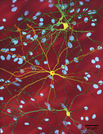
By the end of this section, you will be able to:Explain the relationship between genotypes and phenotypes in dominant and recessive gene systemsDevelop a Punnett square to calculate the expected proportions of genotypes and phenotypes in a monohybrid crossExplain the purpose and methods of a test crossIdentify non-Mendelian inheritance patterns such as incomplete dominance, codominance, recessive lethals, multiple alleles, and sex linkage

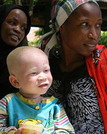
By the end of this section, you will be able to:Explain Mendel’s law of segregation and independent assortment in terms of genetics and the events of meiosisUse the forked-line method and the probability rules to calculate the probability of genotypes and phenotypes from multiple gene crossesExplain the effect of linkage and recombination on gamete genotypesExplain the phenotypic outcomes of epistatic effects between genes
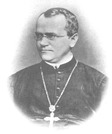
By the end of this section, you will be able to:Describe the scientific reasons for the success of Mendel’s experimental workDescribe the expected outcomes of monohybrid crosses involving dominant and recessive allelesApply the sum and product rules to calculate probabilities

In complete dominance, only one allele in the genotype is seen in the phenotype. In codominance, both alleles in the genotype are seen in the phenotype. In incomplete dominance, a mixture of the alleles in the genotype is seen in the phenotype.

Explore how populations change over time in a NetLogo model of sheep and grass. Experiment with the initial number of sheep, the sheep birthrate, the amount of energy sheep gain from the grass, and the rate at which the grass re-grows. Remove sheep that have a particular trait (better teeth) from the population, then watch what happens to the sheep teeth trait in the population as a whole. Consider conflicting selection pressures to make predictions about other instances of natural selection.

The goal of this activity is to demystify the science behind Punnett Squares and explore data and statistical representations in genetics and heredity. Begin by breeding two parent mice and observe the ratios in the pie chart as more offspring are bred in each litter. Compare the ratios between different pairs of parents and identify how they are different or similar. Finally, use the simulation controls to show gametes and reveal how each offspring obtained its genotype from its parents.

Example punnet square for sex-linked recessive trait.
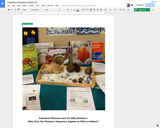
Studying the Fibonacci Sequence is our entry point for studying Heredity: Inheritance and variation of traits.

Since the discovery of the structure of the DNA double helix in 1953 by Watson and Crick, the information on detailed molecular structures of DNA and RNA, namely, the foundation of genetic material, has expanded rapidly. This discovery is the beginning of the “Big Bang” of molecular biology and biotechnology. In this seminar, students discuss, from a historical perspective and current developments, the importance of pursuing the detailed structural basis of genetic materials.
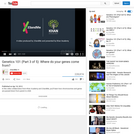
In this video collaboration from Khan Academy and 23andMe, you'll learn how chromosomes and genes are passed down from parent to child.
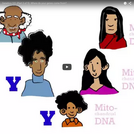
In this video collaboration from Khan Academy and 23andMe, you'll learn how chromosomes and genes are passed down from parent to child.
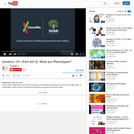
In this video collaboration from Khan Academy and 23andMe, you'll learn how your observable traits, or phenotypes, are the result of interactions between your genes and environment.

In this video collaboration from Khan Academy and 23andMe, you'll learn how your observable traits, or phenotypes, are the result of interactions between your genes and environment.

In this video collaboration from Khan Academy and 23andMe, you'll find out why women don't have a Y chromosome. Even with no Y, women can still learn about their paternal ancestry with genetic testing from services like 23andMe.